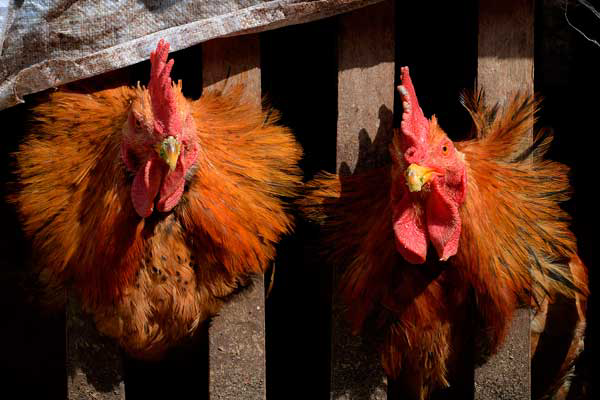Controlling poultry for AI outbreaks in China

The outbreaks of H7N9 influenza in China in spring 2013 resulted in many human cases with a high fatality rate. Poultry were suspected as the source of infection based on sequence analysis and virus isolations from live poultry markets (LPM).
The original source of the virus from poultry farms is unknown but the LPM system served as an amplifier of the virus, with 77% of human cases having known contact with live poultry at a retail markets. What was not clear was which species of birds in these LPM’s were most likely to be infected and shedding sufficient levels of virus to infect humans.
Intranasal inoculation of chickens, turkeys, Japanese quail, pigeons, Pekin ducks, Mallard ducks, Muscovy ducks, and Embden geese with 106 EID50 of the A/Anhui/1/2013 H7N9 virus resulted in infection but no clinical signs. Virus shedding in quail and chickens was much higher and prolonged than in the rest of the species. Quail effectively transmitted the virus to direct contacts but pigeons and Pekin ducks did not. In all species virus was detected at much higher titers from oropharyngeal swabs than cloacal swabs. The HA gene from samples collected from infected chickens and quail were sequenced to examine for changes in the virus after passage in these species.
Examination determined that the inoculum had virus subpopulations that were selected after passage in birds.
The H7N9 virus outbreak clearly had an important poultry component based on the sequence analysis and epidemiology of the virus, and these experimental studies corroborate that poultry species are important reservoirs of the virus.
The high viral shedding from chickens, turkeys, quail and Muscovy ducks create a likely source of infection for humans; however under the right circumstances (stress, immunosuppression), all species examined could be a source of the virus. The high levels of viral replication in the upper respiratory tract and much lower levels in the intestinal tract is characteristic of poultry-adapted influenza viruses, and consequentially testing of bird species should preferentially be conducted with OP swabs for best sensitivity. As the H7N9 virus continues to circulate in poultry changes, including both mutations and possible re-assortment with other influenza viruses, are expected to occur. Continuous monitoring of influenza viruses in poultry is essential for prevention of future outbreaks.
[Source: Mary Pantin-Jackwood, USDA-ARS, Athens, GA USA, Abstracts of the 2014 International Poultry Scientific Forum, Atlanta, GA USA]













